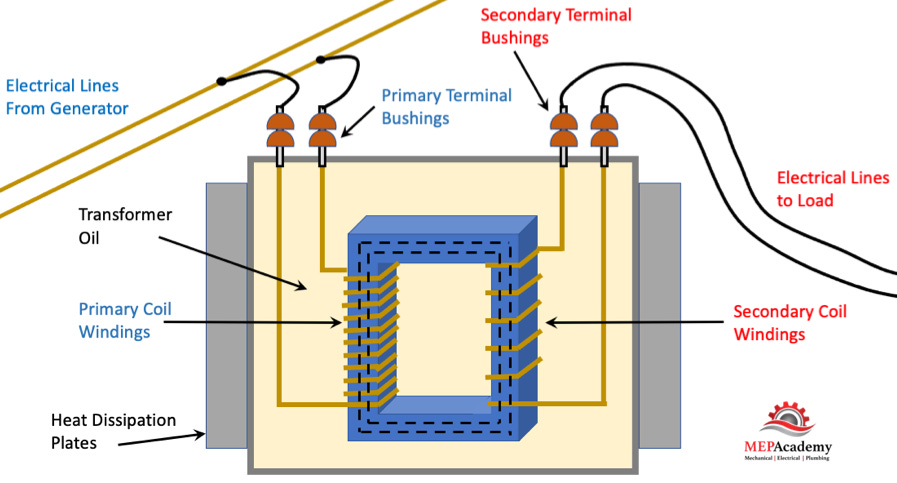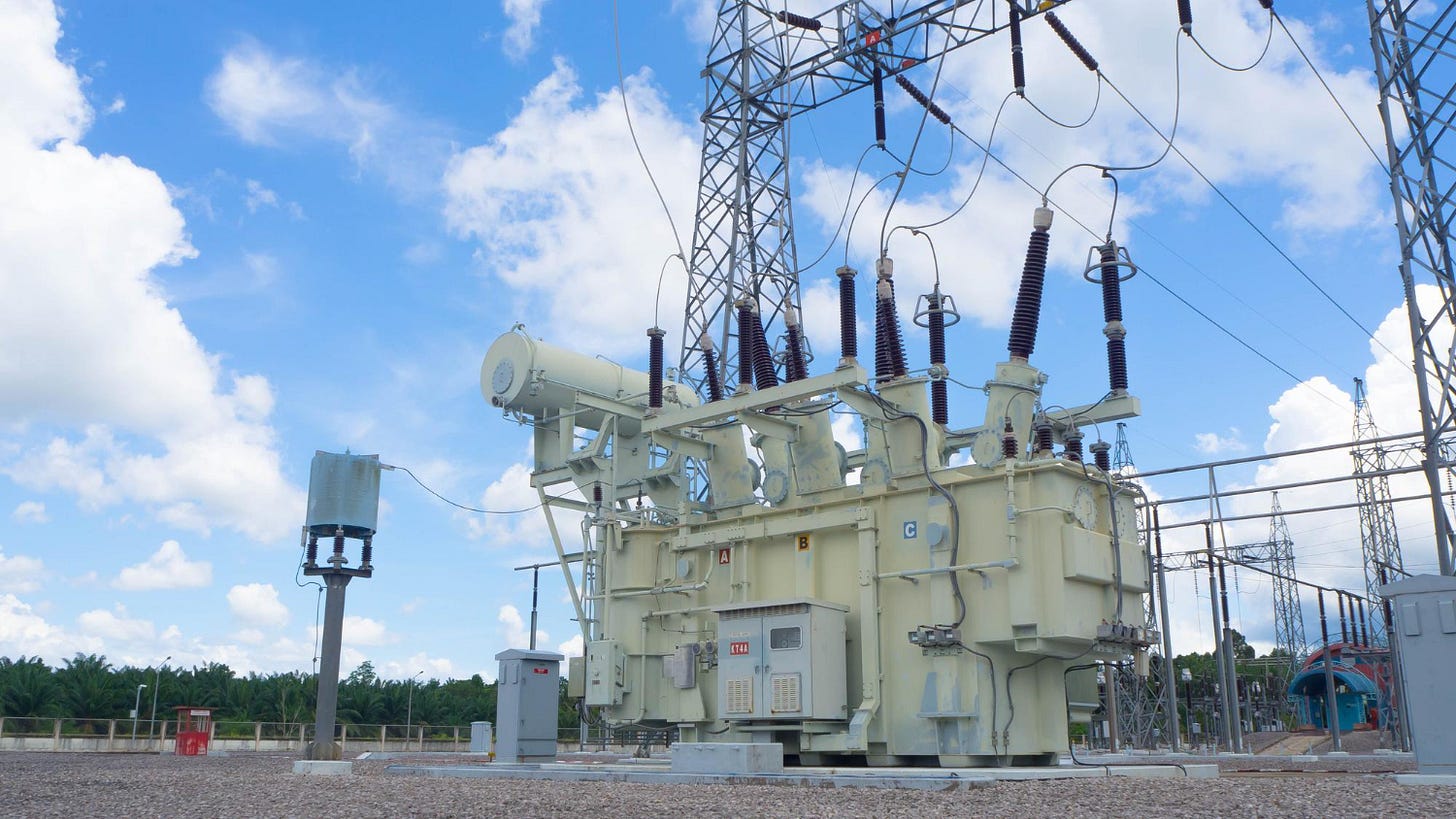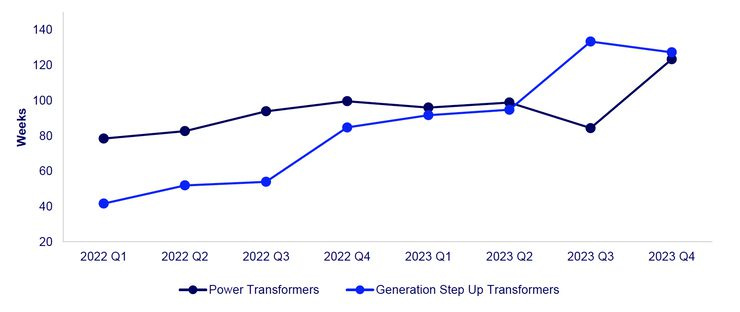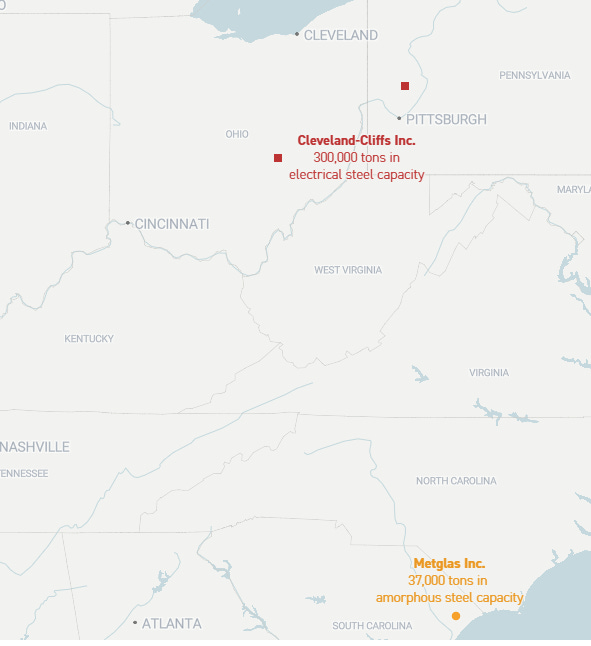Electric transformers are one of those nerdy, niche things that seemingly like 5 people in the world care about, but actually meaningfully affects everyday life while simultaneously being in a problematic condition at the moment for America. Today, I’ll tell you what I know about transformers and explain why they’re so vital to the US electric infrastructure.
What’s a Transformer?
Completely unrelated to the shape-shifting cars in the movies, electric transformers are mechanically-simple devices that have literally one job: transform electricity from one voltage to another. Throughout the grid are various voltages at various locations. Typically, long-distance transmission lines (think, tall skeleton steel structures) carry electricity at a very high voltage - in the hundreds of kilovolts - from power plants to substations.
At neighborhood substations, the voltage of the electricity is stepped down (to the single-digit or tens of kilovolts) via a large transformer, and then carried on distribution lines. These distribution lines run to your home or local business. Right before the wires enter your home, they run through yet another transformer to step down the voltage once again to a safer (and more usable) 240 volts for use in appliances.
Why does the grid have so many different voltages, necessitating transformers along the way? Put simply, higher voltage allows for electricity to be carried with less losses, along smaller lines. For a given amount of power, voltage and current are inversely correlated: more voltage equals less current. Current is the main component of heat generation in cables (its a square function).
In sum, transformers are vital to our electric infrastructure. Unfortunately - and similar to batteries and many other industrial products - the US has a highly diminished capacity to produce a sufficient supply and utilities are running out of transformers.
Don’t believe me that transformers are critical? VP JD Vance (on the Joe Rogan podcast of all places) even mentions how critical they are.
The Anatomy of a Transformer
A transformer at its simplest is made up of the components shown below:
The anatomy of a transformer
Power enters the primary side of the transformer, and runs through copper wires wrapped around a steel core. On the other side of the core (not physically connected to the primary windings) are more copper windings, but with fewer or more wraps around the steel. It's very simple: the ratio of windings between the primary and secondary side determines how much the voltage “stepped up” or “stepped down”. 100 windings on the primary and 50 on the secondary? This transformer reduces the voltage by 50%. It's really that simple. If you want to know more about the physics behind why this works, I found this article quite useful.
Of specific concern is the steel that is used in the core of transformers. Most transformers in the US are made from GOES - Grain Oriented Electrical Steel. Very few are made from Amorphous Steel. The detailed material composition here doesn’t matter, but more on this later.
Transformers come in a ton of shapes and sizes, from huge transformers that live at substations:
A “Large Power Transformer” at a large power plant, stepping up to transmission line voltage
To transformers that serve a single home:
Underground distribution transformer serving a home. Converts from distribution line voltage to 240V (in the US)
Ok So Why Should I Care?
Given the criticality of transformers to grid infrastructure, having a sufficient supply is critical. Importantly, transformers have a useful life of typically 25-35 years. And, you guessed it, grid infrastructure in the US is meaningfully ageing, meaning millions of transformers on the grid are reaching the end of their useful life soon. The National Renewable Energy Lab did some great work on this a few years ago, estimating that US transformer manufacturing capacity needs to at least double over the next decade to keep up. This doesn’t even include the need for more transformers supporting growth in electricity demand from data centers, electrified industry, and EVs.
The actual assembly of the transformer itself isn’t particularly novel or challenging. Hundreds of small-medium sized business assembly transformers from sheet steel enclosures, copper wire, and GOES steel cores throughout the US. The big issue is the steel…
As you’re probably already guessing, GOES steel supply is meaningfully constrained in the US. Astoundingly, there is one, single supplier of GOES steel in the US: Cleveland Cliffs in Zanesville, OH. As such, the vast majority of GOES steel used in transformers built in the US comes from South Korea, Japan, and China.
The US’s sole producer of the steel used in most transformers: AK Steel (owned by Cleveland Cliffs) in Zanesville, OH
Lead time for transformers has meaningfully increased over just the last two years. From: “The Transformer Crisis: An Industry on the Brink”
New Technologies
A relatively new technology is in development that could relieve the supply crunch on GOES: amorphous steel. Amorphous steel is used in a very similar way to GOES steel as a core to the transformer, but has a very different production process. Where GOES requires massive capex and huge furnaces and casting lines, amorphous steel uses small metal spinning devices. Essentially, a metal ingot is heated to melting point, and ripped on a cooled spinning wheel. The steel freezes into a solid so fast that the grain structure does not reorient from the melted state, resulting in a thin foil that is even more efficient than the GOES steel. A great article entitled “Meet the metal that could transform the grid” explains this in great detail.
Another supply constraint exists for this metal: a single producer in the US makes this steel, and they’re even smaller than Cliffs: Metglas makes a little over 10% of the volume of Cliffs. Amorphous steel transformers are meaningfully more efficient than GOES steel transformers but do come at a 10-20% cost premium given the small economies of scale today. As you’d expect, recent legislation was killed to support amorphous steel, supported by both the utility lobbying group and Cliffs.
Like many other capex-intensive, infrastructure manufacturing/construction industries, transformers are in critical need of US manufacturing capacity. Builders looking to make a big impact on American energy dominance should consider transformers as a fascinating “picks and shovels” play on the energy transition and continued US-led world order, enabled by our electrical grid infrastructure.










Great article Justin.
The risks here go far beyond grid upgrades. Major solar storms can fry large numbers of transformers, as happened in Canada in recent decades. Much worse would be a repeat of the Carrington event of 1859, which could fry most of the transformers in North America. We don't have stockpiles of replacements, and can only build new ones at the anemic rate discussed in the article.